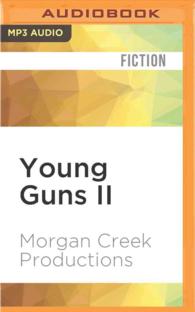- ホーム
- > 洋書
- > 英文書
- > Psychology
Full Description
All the biological entities and all the machines, that we know of, are composed of parts or components. And in every case, in order to understand them, we have to identify the parts and their arrangements and to unravel the structure-function relationships involved. The same will surely be true in the study of the mind-brain and its development. Cognitive development takes place, in the first instance, because the mind-brain is structured in such a way that it performs the function, given some experience, of producing cognitive development. I call this initial structure, the core architecture of the mind-brain, and sketch a theory of a major subsystem of human core architecture. The subsystem I describe has the function of producing conceptual development during infancy and the preschool years. There are two main components to this subsystem. One creates conceptual knowledge of physical objects and mechanics: the other produces conceptual knowledge of Agents their intentional properties. Together, they provide a powerful conceptual core which interfaces intricately with simultaneously developing language structure.
The development of this distinctively human core cognitive system is investigated from infancy onwards exploring both normal and abnormal development.
Contents
Introduction. Part I: Language: 1. Using Language for Communication. 2. Meaning and Interaction. Part II: Learning: 3. Learning Language as a Skill. 4. Language Learning as a Natural Process. 5. Integrating Skill Learning and Natural Learning. Part III: Teaching: 6. A Methodological Framework for Teaching Oral Communication. 7. Involving the Learners. Conclusion. Reference.








